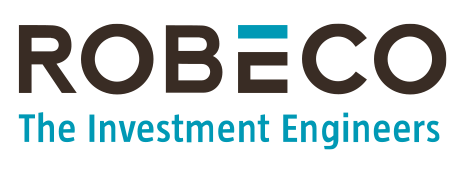- Climate risk and decarbonization have become key priorities for insurers
- Assessing climate risk and decarbonizing portfolios are anything but trivial
- Active asset managers can help insurers address these issues
Insurance companies are directly exposed to climate risk, and face increasingly tighter scrutiny from regulators regarding its impact on their balance sheets. In this context, the gradual decarbonization of investment portfolios has become a top priority for many of them. But that is easier said than done, says Ed Collinge, Global Head of Insurance Strategy at Robeco.
Rising climate risk has been on insurance companies’ agendas for many years already. However, a sense of urgency to act appears to have taken hold of the industry in recent months. Why is that?
“That’s right. Climate risk, in particular portfolio decarbonization, have become center stage. Sustainable investing has long been an area of interest for insurers. Ultimately, they provide downside protection to people in dire circumstances, so sustainability and socially responsible investing is something that fits their investment philosophy. But until recently, it was not necessarily at top of their agenda.”
“In Europe, for example, regulatory changes remained a key focus of attention. The continued low yield environment and the search for better-yielding asset classes, was also a major concern. This fundamentally changed around two years ago, when the European Commission told insurers and other institutional investors that they needed to have a sustainability framework in place.”
“We went from a situation where only insurers from a small number of countries, such as the Netherlands, the Nordics and Switzerland, had embraced sustainability, to a situation where it is at the top of every insurance company’s agenda. This is, at least, how we started 2020. Then, obviously, Covid-19 hit.”
One oft-heard concern, early in 2020, was that Covid-19 might move sustainability down on insurers’ priority list. Has that been the case?
“The economic consequences of Covid-19 and their impact on financial markets have had a significant impact on the balance sheets of insurance companies, but it has not changed their commitment to sustainability. On the contrary, the crisis appears to have boosted the industry’s focus on sustainability. For them, sustainability is about improving the stability of returns, the diversification of portfolios and increased downside protection.”
“Meanwhile, policy makers have not eased the pressure. On the specific aspect of climate risk, for example, we’ve seen a number of important announcements, such as the European commission and Japan’s pledges for greenhouse gas emissions neutrality by 2050. And one powerful way to help achieve these goals, is to encourage institutional investors, including insurers, to become carbon neutral.”
“On the regulatory side, we’ve seen EIOPA, the EU’s independent advisory body for insurance and pensions matters, issue consultation papers on climate risk and its impact on investment portfolios. EIOPA has asked insurance companies to start considering climate risk as something they may have to hold capital against.”
‘Even those not interested in decarbonization will have to start caring, because when trillions of assets start moving towards a lower carbon footprint over the coming years, this will necessarily move markets’
“So, we see insurers increasingly committed to sustainability and climate action and regulators also pushing in that direction. It is all coming together at once. Also, this means that even those not interested in decarbonization will have to start caring, because when trillions of assets start moving towards a lower carbon footprint over the coming years, this will necessarily move markets.”
Still, the transition won’t happen overnight, right?
“True. Investors are currently making commitments and working on the roadmaps to this transition. This is all a staged journey. Most insurers we speak to are thinking in five-year steps. So, they are now defining a goal for 2025 and how to get there. This could be, for example, reducing the carbon footprint of their portfolios by 20% to 25% over the next five years.”
“Remember that insurers invest approximately 90% of their holdings in fixed income. Buying and selling credits aggressively would create unrealized gains and losses with potential knock on effects on what they pay to policy holders, for example. So, the adjustment will necessarily be gradual: investing the proceeds of a maturing bond in a bond featuring a lower footprint.”
“Also, achieving carbon neutrality requires the investable universe to change. Put differently, the companies we can invest in also need to change themselves. And this is why I think active ownership and initiatives such as the Net Zero Asset Owner Alliance, an international group representing 33 large institutional investors with over USD 5 trillion in assets, are so important.”
Apart from designing low carbon investment strategies, are there any other ways asset managers can help?
“One way asset managers can help is to provide insurers a glide path to decarbonization. From that perspective, our recently launched EU-Paris-aligned global fixed income offering – the first of its kind in the fixed income space – is interesting, not because this might be the end goal of a EU-Paris-aligned strategy, but because it is an example of how you can take things to the extremes and build your investment process to actively identify firms that are expected to outperform their peers in reducing carbon.”
“For now, insurance companies may wish to stick to some sort of halfway house. In other words, they may stick to strategies that are not fully compliant with the EU benchmark regulation for Paris Aligned Investments, but that give them an idea of how to get to the ultimate goal of decarbonizing their portfolios by 2050.”
Are there any other ways asset managers can help insurers?
“What differentiates insurers from other types of investors is that they operate in a very tightly regulated industry. This determines their investments to a large extent. For instance, insurers have a strong preference for fixed income, because capital charges are lower, and it matches their long-term liabilities.”
“Yet decarbonizing portfolios is anything but trivial: the more you constrain a portfolio the harder it is to add further constraints without significantly affecting investment returns. Our analysis shows that it is possible to reduce a fixed income portfolio’s carbon footprint by up to 30% to 40% without significantly impacting expected and risk adjusted returns.”
“Meanwhile, insurers also need to understand where carbon data comes from, what it actually means, and how they can consistently report on it, especially if they invest across many asset classes, including private assets, through various asset managers. In short: they need to understand operational nuts and bolts of decarbonizing portfolios.”
“And this is something asset managers can help with. They can help insurers build their portfolio construction processes and analytics, in order to optimize the tradeoff between investment returns and footprint reduction. Decarbonization involves more than basic exclusions. It is a multi-layered problem, that requires deep analytical capabilities.”
This means much more than providing asset management services, right?
“Yes. This is about becoming a sustainability partner. This may include providing support on active ownership, helping with reporting activities or product design, or even helping insurers determine their sustainability agenda. Asset managers like Robeco can assist insurers in their journey towards decarbonization, or – in fact – any particular sustainable investment goal they may pursue.”
‘Impact investing is spreading into mainstream capital markets. And this is a good thing.’
“Historically, investors have sought to make this type of impact through instruments like green bonds or socially responsible venture capital (SRVC). But now, impact investing is spreading into mainstream capital markets. And this is a good thing, because green bonds or SRVC will likely remain a small part of insurers portfolios, as their investable universe is relatively small.”
Apart from climate, what are the other areas investors are asking for?
“Topics like gender diversity, inequality, resource scarcity or healthy living are increasingly on insurers agenda. And this can be associated with increasing demand for trends and thematic strategies. Why would an insurer not be investing in something that supports the trend of healthy living or sustainable water? This is a relatively new phenomenon, but it is also gathering momentum.”
For insurers to make the most of a strategy, customization is essential. Contact us directly or visit our website:
Important Information
Robeco Institutional Asset Management B.V. (Robeco B.V.) has a license as manager of Undertakings for Collective Investment in Transferable Securities (UCITS) and Alternative Investment Funds (AIFs) (“Fund(s)”) from The Netherlands Authority for the Financial Markets in Amsterdam. This document is solely intended for professional investors, defined as investors qualifying as professional clients, who have requested to be treated as professional clients or who are authorized to receive such information under any applicable laws. Robeco B.V and/or its related, affiliated and subsidiary companies, (“Robeco”), will not be liable for any damages arising out of the use of this document.
The contents of this document are based upon sources of information believed to be reliable and comes without warranties of any kind. Any opinions, estimates or forecasts may be changed at any time without prior notice and readers are expected to take that into consideration when deciding what weight to apply to the document’s contents. This document is intended to be provided to professional investors only for the purpose of imparting market information as interpreted by Robeco. It has not been prepared by Robeco as investment advice or investment research nor should it be interpreted as such and it does not constitute an investment recommendation to buy or sell certain securities or investment products and/or to adopt any investment strategy and/or legal, accounting or tax advice.
All rights relating to the information in this document are and will remain the property of Robeco. This material may not be copied or used with the public. No part of this document may be reproduced, or published in any form or by any means without Robeco’s prior written permission. Investment involves risks. Before investing, please note the initial capital is not guaranteed. This document is not directed to, nor intended for distribution to or use by any person or entity who is a citizen or resident of or located in any locality, state, country or other jurisdiction where such distribution, document, availability or use would be contrary to law or regulation or which would subject Robeco B.V. or its affiliates to any registration or licensing requirement within such jurisdiction.
This document may be distributed in the US by Robeco Institutional Asset Management US, Inc. (“Robeco US”), an investment adviser registered with the US Securities and Exchange Commission (SEC). Such registration should not be interpreted as an endorsement or approval of Robeco US by the SEC. Robeco B.V. is considered “participating affiliated” and some of their employees are “associated persons” of Robeco US as per relevant SEC no-action guidance. SEC regulations are applicable only to clients, prospects and investors of Robeco US. Robeco US is located at 230 Park Avenue, 33rd floor, New York, NY 10169.
© Q1/2021 Robeco


